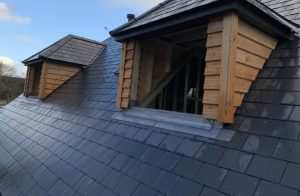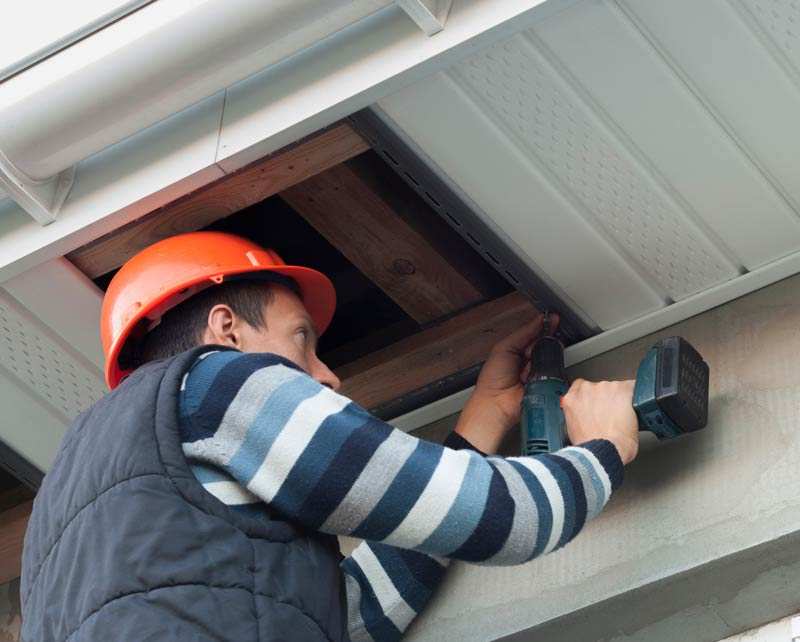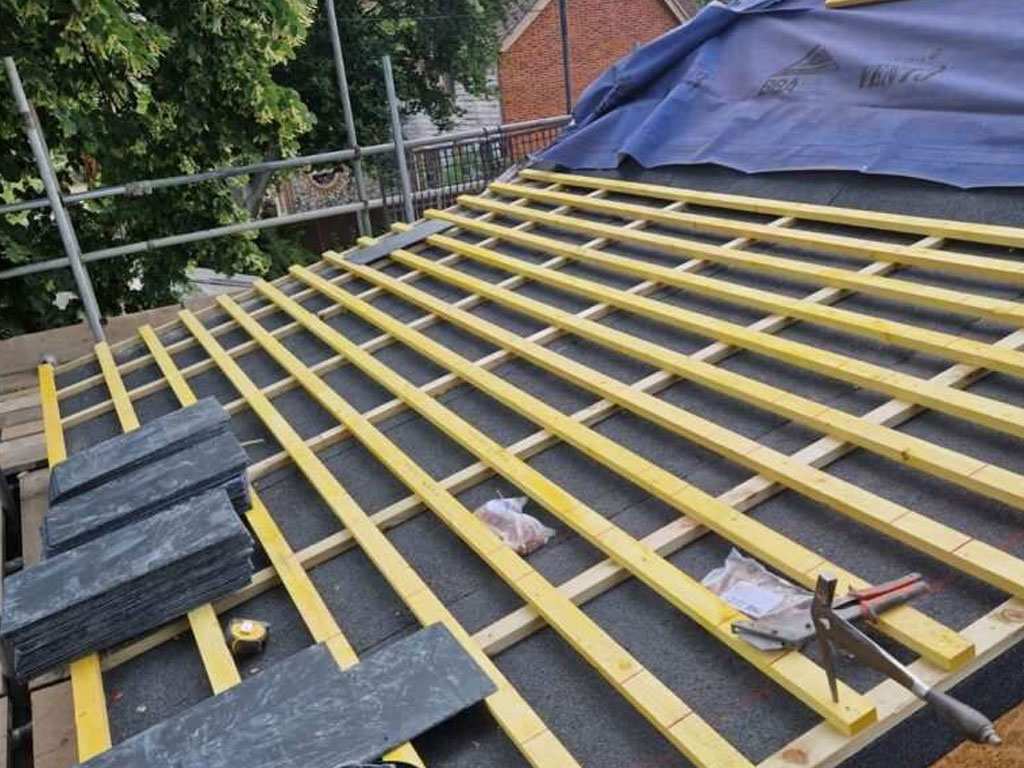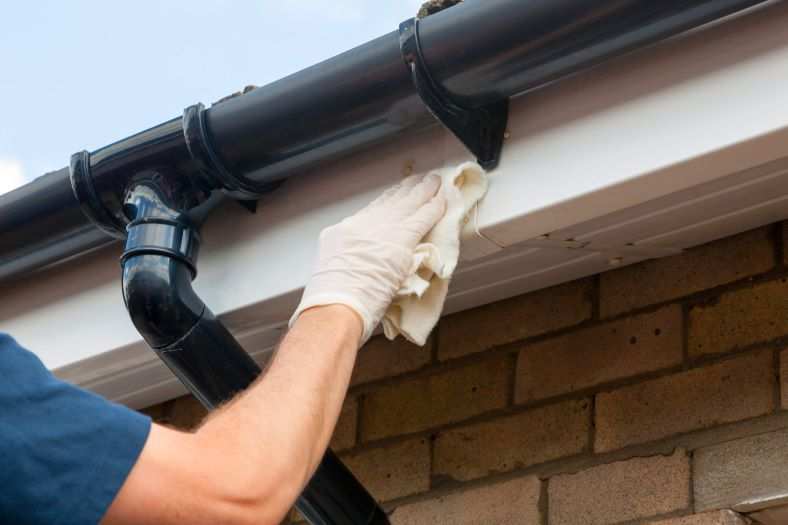Roofing estimates form the backbone of any roofing project. They give homeowners a sense of the potential cost involved and provide a detailed breakdown of the materials, labour, and any additional services needed to complete the project.
For most homeowners, roofing estimates are a crucial first step in planning a new roof or a roof repair, but understanding the various elements that go into these estimates can be challenging.
The importance of understanding the costs of a roof installation cannot be overstressed. It aids in budgeting, facilitates comparison among different service providers, and ultimately ensures that there are no surprise costs down the line.
In this blog post, KMS Roofing dissects the various elements that go into a roofing estimate, helping you to make more informed decisions about your roofing needs.
Basic Components of a Roofing Estimate
Labour Costs
The cost of labour is a significant portion of any roofing estimate. This is the cost associated with the manual work undertaken by the roofing team, including the time it takes to install the new roof and any necessary preparatory work. Labour costs can vary considerably based on factors such as the complexity of the project, the experience level of the workers, and regional wage differences.
Material Costs
Material costs make up another large portion of a roofing estimate. The type of materials selected for a roofing project can have a significant impact on the overall cost. For instance, asphalt shingles may be less expensive than slate or tile shingles. Each material has its own pros and cons, including lifespan, aesthetics, and maintenance requirements, all of which need to be considered alongside the price.
Size of the Roof
The size of the roof is a critical factor in the overall estimate. Roofing costs are typically quoted on a per-square basis (a “square” in roofing terms is 10 square feet). Therefore, larger roofs will naturally require more materials and labour, resulting in higher costs. Measuring the roof size can be a tricky process, which is why it’s often left to professionals to provide an accurate measurement.
Roof Pitch and Design
The complexity of the roof’s design and its pitch (steepness) also play a part in the cost. A simple, low-pitch roof is easier and safer to work on, requiring less time and specialised equipment. In contrast, a high-pitch or complex roof design with multiple levels or features such as chimneys or skylights will increase the labour and sometimes the material costs.
Additional Factors Influencing a Roofing Estimate
Removal of the Old Roof
The cost of removing and disposing of the old roofing material can add a substantial amount to a roofing estimate. The process involves significant labour and disposal costs, especially if the old roof has multiple layers or if the materials are particularly heavy. It’s also worth considering that in some cases, the old roof may not need to be removed, which can result in considerable savings.
Roofing Warranties
Different types of warranties can affect the final estimate of your roofing project. There are manufacturer’s warranties that cover defects in the roofing material and workmanship warranties provided by the contractor to cover installation problems. These warranties provide peace of mind but may come at a cost, depending on the specifics of the warranty coverage.
Building Regulations
In the UK, certain building regulations must be adhered to when constructing or refurbishing roofs. These regulations cover everything from the performance of the materials used to the overall structure of the roof. Ensuring that your new roof complies with these standards may add to your costs but will ensure your roof is safe and durable.
Understanding the Roofing Estimate Document
A roofing estimate should be a clear, written document detailing all costs associated with the project. It should include an itemised list of materials, a breakdown of labour costs, any additional services such as old roof removal, and details of warranties provided.
Understanding these details can help you avoid unexpected costs and ensure that you’re comparing like-for-like when looking at estimates from different providers.
In addition to the specifics, it’s important to pay attention to any hidden costs. These might include contingencies for unexpected repairs or additional costs for work that goes beyond the agreed scope. Always ensure you fully understand the terms and conditions and don’t hesitate to ask the provider for clarification if anything is unclear.
Tips for Homeowners
Choosing a roofing contractor is an important decision and should be based on more than just the cost. It’s advisable to select a contractor with a good reputation, positive customer reviews, and a proven track record. Don’t be afraid to ask for references or examples of previous work.
Getting multiple estimates is another crucial step. This will not only give you a better sense of the potential cost but will also allow you to compare what different contractors are offering.
When comparing estimates, however, ensure you are comparing like-for-like – the cheapest estimate may not always be the best if it does not include all necessary services or provides subpar materials.
Finally, consider the trade-off between cost and quality. While it may be tempting to go with the cheapest option, investing in high-quality materials and workmanship can result in a roof that lasts longer and requires less maintenance, potentially saving you money in the long run.
Conclusion
Understanding a roofing estimate is an essential part of any roofing project. It provides a roadmap of the anticipated costs, helping you to budget appropriately and avoid any financial surprises.
By taking the time to understand the various elements that contribute to a roofing estimate, you can be confident in your choices and ultimately end up with a new roof that not only looks good but stands the test of time.
Choosing the right roofing contractor, understanding the importance of quality materials, and ensuring compliance with UK building regulations are all key factors in the success of your project.
Remember that a roof is not just an aesthetic feature of your home, but a structural element that protects your property and adds value to your investment. Understanding roofing estimates is your first step in ensuring that your new roof meets all these criteria.









